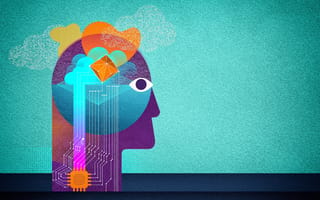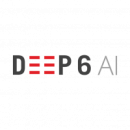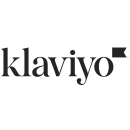When Dr. Bernice Kwong realized that many patients at her supportive oncology clinic regularly visited online forums seeking advice for treatment-caused conditions like hair loss and skin rashes, she wondered if there were any way physicians could use the wealth of data on those networks to more quickly discover potential adverse drug reactions.
The study she designed with six co-authors employed a tool that teased out cognitive relationships from patients’ online testimonials using natural language processing, a subcategory of artificial intelligence in which computers are pushed to analyze and understand large amounts of spoken or written language. Called DeepHealthMiner, the tool analyzed millions of posts from the Inspire health forum and yielded promising results.
Dr. Kavita Sarin, an assistant professor of dermatology at Stanford University Medical Center and one of the study’s co-authors, told Built In that besides detecting common drug reactions associated with various cancer medications, “we could actually detect them on online health forums earlier than they were published in medical literature.”
Natural Language Processing Examples
- Healthcare
- Machine translation
- Chatbot and voice assistants
- Search engine tools
Because the NLP-analyzed forums reflected understood drug-reaction associations, the study uncovered a “rare, missed adverse drug reaction” that was hiding in plain sight on cancer-support message boards for more than a decade: loss of sweating. “A single institution or single physician will not see enough patients to actually be able to detect that that’s a significant adverse reaction,” Sarin said.
While the study merely helped establish the efficacy of NLP in gathering and analyzing health data, its impact could prove far greater if the U.S. healthcare industry moves more seriously toward the wider sharing of patient information.
“If the United States had a broader electronic medical records sharing, it would open the avenue for natural language processing and deep learning on those medical records,” Sarin said.
From translation and order processing to employee recruitment and text summarization, here are more NLP examples and applications across an array of industries.
NLP in Healthcare Examples
Founded: 2015
Location: Seattle, Washington
Dubbed “the Amazon Prime of primary care,” this healthtech company — led by the founder of Cozi — puts a more tech-savvy spin on the increasingly popular telehealth approach. Patients sign up for an annual subscription and are connected to primary care doctors via the app, through which they can text one-on-one about symptoms and treatment options. Before chatting directly with a physician, users give details about their health history and condition to 98point6’s automated assistant, an NLP-powered tool that streamlines pertinent info, similar to what a nurse does in a traditional doctor’s office.
Founded: 2017
Location: New York, New York
Combining AI, machine learning and natural language processing, Covera Health is on a mission to raise the quality of healthcare with its clinical intelligence platform. The company’s platform links to the rest of an organization’s infrastructure, streamlining operations and patient care. Once professionals have adopted Covera Health’s platform, it can quickly scan images without skipping over important details and abnormalities. Healthcare workers no longer have to choose between speed and in-depth analyses. Instead, the platform is able to provide more accurate diagnoses and ensure patients receive the correct treatment while cutting down visit times in the process.
Founded: 2015
Location: Pasadena, California
Deep 6 AI developed a platform that uses machine learning, NLP and AI to improve clinical trial processes. Healthcare professionals use the platform to sift through structured and unstructured data sets, determining ideal patients through concept mapping and criteria gathered from health backgrounds. Based on the requirements established, teams can add and remove patients to keep their databases up to date and find the best fit for patients and clinical trials.
Founded: 1994
Location: Chicago, Illinois
IMO Health provides the healthcare sector with tools to manage clinical terminology and health technology. In order for all parties within an organization to adhere to a unified system for charting, coding, and billing, IMO’s software maintains consistent communication and documentation. Its domain-specific natural language processing extracts precise clinical concepts from unstructured texts and can recognize connections such as time, negation, and anatomical locations. Its natural language processing is trained on 5 million clinical terms across major coding systems. The platform can process up to 300,000 terms per minute and provides seamless API integration, versatile deployment options, and regular content updates for compliance.
NLP in Machine Translation Examples
Founded: 2004
Location: San Mateo, California
Roblox offers a platform where users can create and play games programmed by members of the gaming community. With its focus on user-generated content, Roblox provides a platform for millions of users to connect, share and immerse themselves in 3D gaming experiences. The company uses NLP to build models that help improve the quality of text, voice and image translations so gamers can interact without language barriers.
Founded: 1975
Location: Redmond, Washington
Microsoft has explored the possibilities of machine translation with Microsoft Translator, which translates written and spoken sentences across various formats. Not only does this feature process text and vocal conversations, but it also translates interactions happening on digital platforms. Companies can then apply this technology to Skype, Cortana and other Microsoft applications. Through projects like the Microsoft Cognitive Toolkit, Microsoft has continued to enhance its NLP-based translation services.
Founded: 1911
Location: Armonk, New York
IBM equips businesses with the Watson Language Translator to quickly translate content into various languages with global audiences in mind. With glossary and phrase rules, companies are able to customize this AI-based tool to fit the market and context they’re targeting. Machine learning and natural language processing technology also enable IBM’s Watson Language Translator to convert spoken sentences into text, making communication that much easier. Organizations and potential customers can then interact through the most convenient language and format.
Founded: 1997
Location: New York, New York
Translation company Welocalize customizes Googles AutoML Translate to make sure client content isn’t lost in translation. This type of natural language processing is facilitating far wider content translation of not just text, but also video, audio, graphics and other digital assets. As a result, companies with global audiences can adapt their content to fit a range of cultures and contexts.
NLP Chatbot and Voice Technology Examples
Founded: 2012
Location: Boston, Massachusetts
Klaviyo offers software tools that streamline marketing operations by automating workflows and engaging customers through personalized digital messaging. Natural language processing powers Klaviyo’s conversational SMS solution, suggesting replies to customer messages that match the business’s distinctive tone and deliver a humanized chat experience.
Founded: 2018
Location: Fully Remote
If you’ve ever stood waiting at a restaurant counter while a harried cashier took a phone order, you know that peculiar feeling of empathy and impatience — empathy because they probably had to take that order, impatience because you’ve been patiently waiting in person. Kea aims to alleviate your impatience by helping quick-service restaurants retain revenue that’s typically lost when the phone rings while on-site patrons are tended to. The company’s Voice AI uses natural language processing to answer calls and take orders while also providing opportunities for restaurants to bundle menu items into meal packages and compile data that will enhance order-specific recommendations.
Founded: 2004
Location: South Jordan, Utah
Employee-recruitment software developer Hirevue uses NLP-fueled chatbot technology in a more advanced way than, say, a standard-issue customer assistance bot. In this case, the bot is an AI hiring assistant that initializes the preliminary job interview process, matches candidates with best-fit jobs, updates candidate statuses and sends automated SMS messages to candidates. Because of this constant engagement, companies are less likely to lose well-qualified candidates due to unreturned messages and missed opportunities to fill roles that better suit certain candidates.
Founded: 1994
Location: Bellevue, Washington
Amazon is working to make Alexa a fixture in the daily lives of international customers by expanding its language translation abilities. In partnership with Amazon Translate, Alexa can now tap into deep learning models and provide more accurate language translations. The AI voice assistant has been able to serve English speakers, but non-English speakers have often been at a disadvantage. With the help of Amazon Translate, Amazon’s Alexa now showcases eight languages and 15 different locales to support a much more diverse audience in the coming years.
Founded: 2007
Location: New York, New York
Data-powered marketing platform Zeta Global leverages advanced artificial intelligence and trillions of consumer signals to help marketers acquire, grow and retain customers more efficiently. Its Zeta Opportunity Engine allows marketers to ask questions and receive real-time responses without burdening their development team. Built on a chat-based ecosystem powered by natural language processing and machine learning algorithms, the tool makes it faster and easier to get answers to questions such as “What are the three most common journeys our customers take?” and “Which channels should we invest more budget into?”
Founded: 2008
Location: San Francisco, California
Thumbtack’s platform makes it easy for homeowners to connect with skilled professionals who can handle a variety of home projects, and the technology gives professionals access to resources that can help them grow. Thanks to a partnership with Amazon Alexa, Thumbtack users can take advantage of AI and natural language processing capabilities to explore business profiles and book services.
NLP Search Engine Examples
Founded: 2009
Location: Mountain View, California
Poor search function is a surefire way to boost your bounce rate, which is why self-learning search is a must for major e-commerce players. Several prominent clothing retailers, including Neiman Marcus, Forever 21 and Carhartt, incorporate BloomReach’s flagship product, BloomReach Experience (brX). The suite includes a self-learning search and optimizable browsing functions and landing pages, all of which are driven by natural language processing.
Founded: 2014
Location: London, Texas
Deeper Insights empowers companies to ramp up productivity levels with a set of AI and natural language processing tools. The company has cultivated a powerful search engine that wields NLP techniques to conduct semantic searches, determining the meanings behind words to find documents most relevant to a query. Instead of wasting time navigating large amounts of digital text, teams can quickly locate their desired resources to produce summaries, gather insights and perform other tasks.
Founded: 2009
Location: Austin, Texas
With its AI and NLP services, Maruti Techlabs allows businesses to apply personalized searches to large data sets. A suite of NLP capabilities compiles data from multiple sources and refines this data to include only useful information, relying on techniques like semantic and pragmatic analyses. In addition, artificial neural networks can automate these processes by developing advanced linguistic models. Teams can then organize extensive data sets at a rapid pace and extract essential insights through NLP-driven searches.
Founded: 2015
Location: New York, New York
Kustomer offers companies an AI-powered customer service platform that can communicate with their clients via email, messaging, social media, chat and phone. It aims to anticipate needs, offer tailored solutions and provide informed responses. The company improves customer service at high volumes to ease work for support teams.
NLP Limitations
Applications that learn and adapt from interactions with human beings face a tricky challenge: human beings. The public reception of Microsoft’s AI chatbot Tay serves as a reminder of this reality. Unveiled on Twitter and a few messaging apps in March of 2016, it took all of one day of human interaction for Tay to sink from sunny optimist (sample tweet: “humans are super cool”) to a spewer of hateful vitriol.
There’s also some evidence that so-called “recommender systems,” which are often assisted by NLP technology, may exacerbate the digital siloing effect.
“The decisions made by these systems can influence user beliefs and preferences, which in turn affect the feedback the learning system receives — thus creating a feedback loop,” researchers for Deep Mind wrote in a 2019 study.
One of the most obvious limitations of natural language processing is also frequent among humans: missing the point. Gone are the days of interfaces that literalize colloquial phrases like “he’s on fire” or “pick your brain,” but getting machines and humans on the same idiosyncratic wavelength isn’t easy.
Take Shakespeare, for example. Microsoft ran nearly 20 of the Bard’s plays through its Text Analytics API. The application charted emotional extremities in lines of dialogue throughout the tragedy and comedy datasets. Unfortunately, the machine reader sometimes had trouble deciphering comic from tragic.
“The algorithm couldn’t work out whether Hamlet’s mad ravings were real or imagined, whether characters were being deceptive or telling the truth,” a Microsoft reporter wrote. “That meant that the AI labeled events as positive when they were negative, and vice-versa. The AI believed The Comedy of Errors was a tragedy because of the physical, slapstick moments in the play.”
The use of NLP, particularly on a large scale, also has attendant privacy issues. For instance, researchers in the aforementioned Stanford study looked at only public posts with no personal identifiers, according to Sarin, but other parties might not be so ethical. And though increased sharing and AI analysis of medical data could have major public health benefits, patients have little ability to share their medical information in a broader repository.
From the perspective of job security, of course, some limitations of NLP can seem like saving graces — reminders that even the most advanced chatbots can’t render a medical diagnosis, that the most accurate language translation requires human eyes and that Shakespeare scholars won’t soon be automated out of academia.
Which isn’t to negate the impact of natural language processing. More than a mere tool of convenience, it’s driving serious technological breakthroughs.
As Sarin said of her NLP-powered research, “It’s really just the tip of the iceberg.”




















